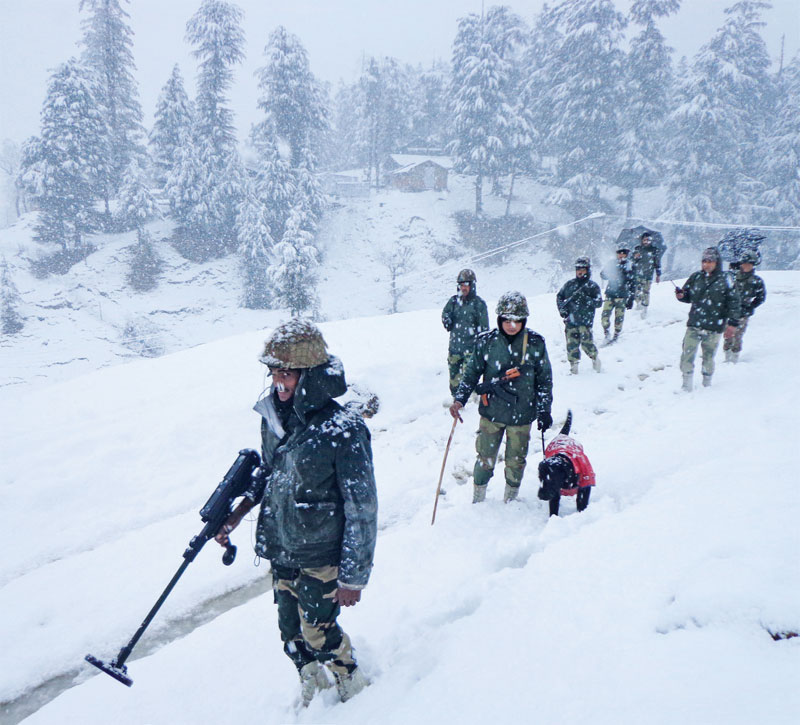Better measures should be taken to induct women in combat roles
 R.C. Sharma
R.C. Sharma
In the article ‘Let’s not pitchfork women into combat role’ (the Tribune, 20 February 2020) Lt Gen. Harwant Singh (retd) wrote, “There is no compulsion to get women in combat arms and same is not in the best interest of national security. There is no shortage of men, women need to be spared the ordeal of combat and instead avenues should be opened for them across a range of other fields”.
Combat involves extreme violence. The Border Security Force (BSF) saw this happen in Pyrdiwah in April 2001 where 16 brave were martyred. Bodies had signs of extreme torture involving strangulation, broken bones and mutilation. Combat for border guarding forces involves wartime deployment, border skirmishes and duties in isolated environment. It involves long marches, load carrying, mobilisation at short notice and other physically demanding tasks which women may not be able to handle.
Until 2008, border-guarding forces had no representation for women in general duty cadre. The government reserved 14-15 per cent posts in border guarding forces i.e., BSF, Sashtra Seema Bal (SB) and Indo-Tibetan Border Police (ITBP) for women. The decision was taken without homework, and border-guarding forces have still not been able to ensure full integration of women in their organisational structure. The decision was implemented by border guarding forces without creating the eco-system, habitat and without detailed brainstorming. The majority of men in border guarding forces come from rural and feudal backgrounds. They find it difficult to accept women as colleagues/ seniors or take orders from them. Moreover, border guarding forces did not anticipate the difficulties involved. They did not prepare a concept paper to benchmark duties for women so that an environment of harmony exists among men and women.
Instead, the induction created two dissatisfied groups: women, who were not able to cope with difficult border environment; and men. In the BSF, the first batch of women constables joined in 2008. Even after 13 years, the force has not been able to create infrastructure for women to meet their needs and is still managing with improvisation. The position is no different in other border guarding forces. How the figure of 15 per cent was arrived at for recruitment of women is still a mystery. Did the government carry out an analysis of hazardous and hostile geographical conditions of borders before arriving at the figure?
Consequently, the government has even failed to achieve the target of five per cent women in border guarding forces. No professional analysis of duties for women in general duty stream was undertaken before induction considering border environment and infrastructure for women. Given this, there is an urgent need to carry out detailed analysis of the entire gamut of induction of women in border guarding forces and look for alternate avenues within the forces, which improves their efficiency and leads to harmony between men and women. Service conditions for constabulary in these forces are hostile; hence, vacancies for women largely remain unfilled. As on 30 June 2017, the strength of women in border guarding forces was 5,052 in the BSF, 1,743 in the ITBP and 1,397 in the SSB.
Border guarding forces are not compatible for women operationally, administratively and socially. Combatant job in these is tiring and exhausting with duty cycle of 15-18 hours in 24 hours with irregular sleep, rest and relief. Women are not able to match men or perform duties at par with them and hence, the harmony is affected. A detailed analysis is needed to understand whether women are suited for border guarding forces or not. Are they required in combat? Do they face gender bias and sexual harassment in service? And how can their representation be increased?
Women and Border Guarding
Borders are geographically and climatically hostile. Worse, one also has to deal with a hostile counterpart and, sometimes population too. The non-availability of suitable infrastructure for women at border outposts (BOPs) and battalion headquarters further worsen matters. Women are made to live in accommodation which is plain pathetic at many places and at others unsatisfactory. They put them in physical and mental discomfort and stress. No thought has ever been given to the various problems faced by women. Even today, there is no change in ground situation, rather it has worsened. There are no washrooms and toilets for women at duty points.
One of the reasons for poor gender-sensitive infrastructure is that there is a widespread belief in the services that women are not suited for the combat role in border guarding forces. This belief stems from the following factors:
- Women are willing to perform border duties as long as they are unmarried. Post-marriage, given their social milieu, they are unable to cope with the difficult border life;
- While women are exempt from border duties until the child is one-and–half-year old, in practice, most women ask for a break from combat duties until the child is much older, or at least has completed matriculation;
- The woman’s physicality comes in the way of their performing rigorous duty regime. Biological factors also create problems wherein they have to be off-duty leading to depletion in strength and putting extra pressure on men;
- Women constables, on an average, avail leave many times during a year, staying away from duty for 100- 150 days; sometimes even more. Their duties are assigned to men. This disrupts the Company leave plan and operational profile of a platoon;
- Women often opt for sedentary duties;
- Several women constables are not available to their units for extended duration, since they are often called upon to participate in events to showcase women power. This depletes the already depleted strength of the unit; and
- There is popular sentiment against women combatant being taken as prisoner of war or hostage by the enemy.
Isolation at borders with poor and pathetic infrastructure makes it difficult for women to perform border guarding duties which in any case are physically and mentally demanding. Border guarding forces have not been able to integrate women in an organisational structure despite women being there for more than a decade. The main reason for non-integration is organisational deficiencies wherein senior leadership was not prepared for receiving women in the organisation, both in terms of infrastructure development and crafting training schedule for integrating them in all activities on the border.
That is the reason commanders avoid sending women constables ahead of the fence or for patrolling the zero line. Initially, women were utilised for showcasing them as indicator of women empowerment. They were not assigned combat duties as mandated by rules. Consequently, women constables became used to kid glove treatment, thereby defeating the whole purpose of integration.
Even today, non-integration is the main reason that border guarding forces fail to attract women. They need to be integrated in tactical groupings and take on all mandated duties at par with men. Integration is difficult unless revolutionary steps are initiated after detailed deliberations instead of in a knee-jerk manner.

Women and Combat Role
To withstand the rigours of border and war-fighting, women have to be physically and mentally tough through battle-hardened training. Border guarding forces have failed women by not training them to integrate in the organisation. Women need to be strong to withstand the trauma and torture as prisoner of war or hostage and mentally-oriented for any eventuality, including sexual assault.
Presently, women in these forces form part of tactical groups i.e., section, platoon and company and therefore, are part of the fighting strength. Due to gender consciousness in the hierarchy, a large number of women remain on maternity, childcare, medical, earned/casual leave or on attachment with higher headquarters. Propensity for leave increases during the period when natural situation imposes extra burden on manpower like harvesting season, when troops have to be extra alert than normal or during the period preceding national days like August 15 and January 26 when operational alertness is observed and maximum strength mobilised for border duties.
You must be logged in to view this content.

